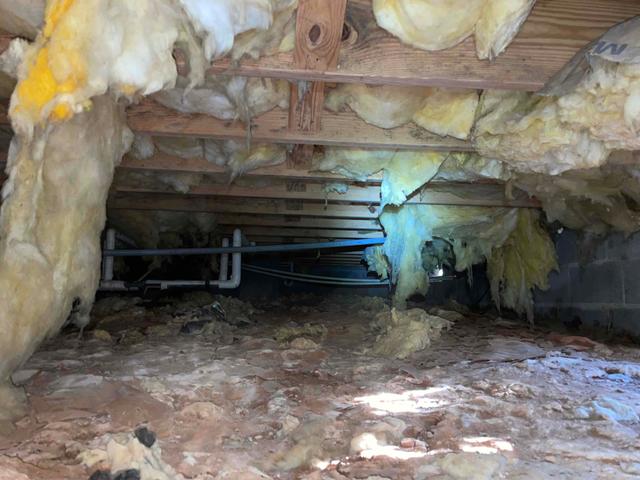
Fiberglass Insulation in The Crawl Space
The moisture that has found its way into the crawl space impacts a number of things, including the fiberglass insulation in the floor joists. Fiberglass soaks up moisture like a kitchen sponge. The moisture in turn makes it heavier causing it to fall away from the floor. It also causes a process called delamination, where the fibers of the insulation pull away from one another causing the material to look like it's dripping from the floors.
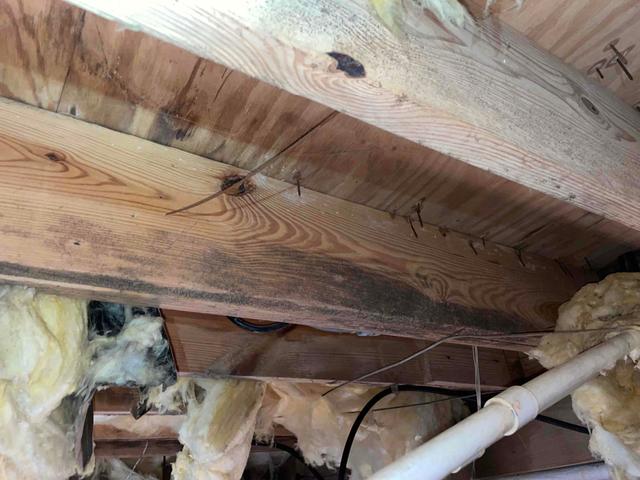
Mold & Mildew Growth
High relative humidity, along with warm temperatures allow mold and mildew growth to occur on organic materials, like the floor joists. The damp insulation also holds moisture against the floor joists and subfloor. Inside the home, you might notice musty odors from the microbial growth in the crawl space.

Bulk Water Infiltration
It's easy to tell by looking at the ground here that it spends a lot of its time saturated by water. Efflorescence and staining on the foundation walls also indicate that water tends to seep through the walls ad into the crawl space as well. When we see big areas of saturation like this, it's usually a good indicator that bulk water is an issue under the home and will need to be mitigated to keep the crawl space dry. Other signs we often see, also noted in these crawl spaces were trenches worn by the water around the perimeter of the crawl space.
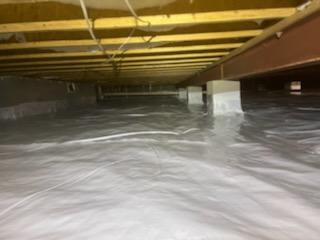
Antimicrobial Treatment
After all the debris is cleaned out of the crawl space, the floor joists are treated with an antimicrobial solution to kill the mold and mildew growth on the floor joists.
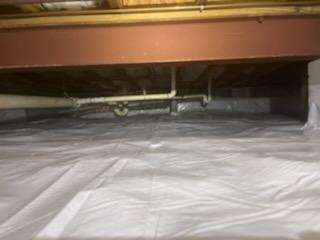
Vapor Barrier - Clean Space Light
A heavy-duty, CleanSpace Light vapor barrier is installed on the crawl space floor. This liner is a 10-mil thick liner overlapped and sealed at all seams. It's wrapped and sealed around all foundation piers and attached to the foundation walls about 6 inches above outside grade, sealing the crawl space off from the influence of the earth's moisture.
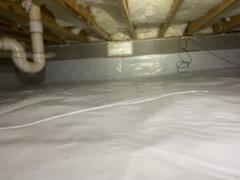
Air Sealing the Crawl Space
To keep as much outside air carrying moisture out as possible, the crawl space is air sealed. This is achieved by sealing all crawl space vents, any penetrations through the foundation walls to the outside, and the sill plate.
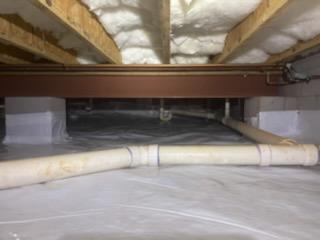
Insulation in Crawl Space & Dehumidifier
In this case, our client opted to replace the R-19 fiberglass bats in the floor joists and leave the rim band unsealed. They have done the majority of the work to seal off the outside air, however, the rim band can be a cause for cold floors and drafts in colder months. A SaniDry Sedona Dehumidifier is also installed to control the relative humidity in the crawl space keeping it below the threshold that would allow microbial growth to begin and helping to protect the crawl space from future moisture damage.
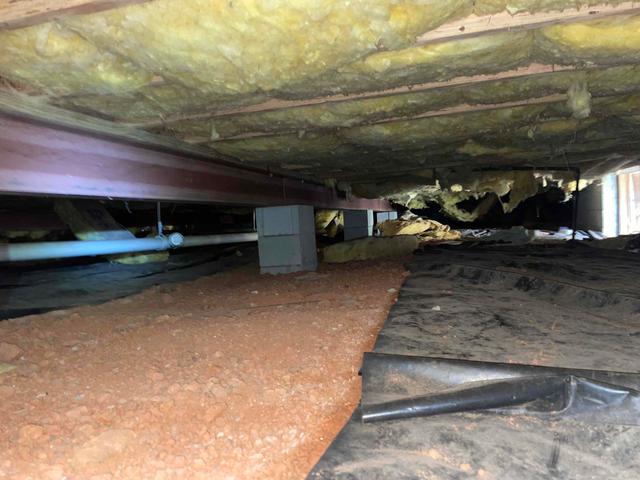
Ground Cover & Vapor Barriers
A 6 mil vapor barrier is laid out over some of the crawl space floors. Its purpose is to protect the crawl space from the moisture in the earth's soils and keep it from rising into the crawl space. However, the gaps in the system, allow this moisture to easily rise into the crawl space and contribute to the high relative humidity and moisture damage our clients are experiencing.
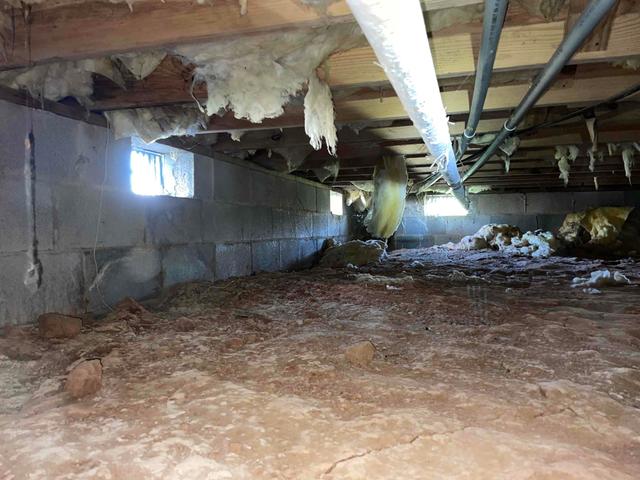
Open Foundation Vents
Moisture and high relative humidity are what cause all the problems in a crawl space. Open foundation vents allow hot, humid air to flood into the crawl space during warmer months. This moisture gets trapped in the crawl space raising the relative humidity, and causing all sorts of problems under your home. You might even notice that it feels humid inside the home as well.

Foundation Drainage System
A perimeter drainage system is installed in the crawl space below grade level to address the bulk water entry. The drainage system will collect infiltrating water and feed it to a SuperSump Plus system which will pump the water out of the crawl space, away from the foundation, and to a place on the property determined by the property manager. Without the drainage system to address the bulk water, it could ultimately breach the vapor barrier, which is only designed to protect the crawl space from water vapor, and result in the same problems the clients were trying to repair.


